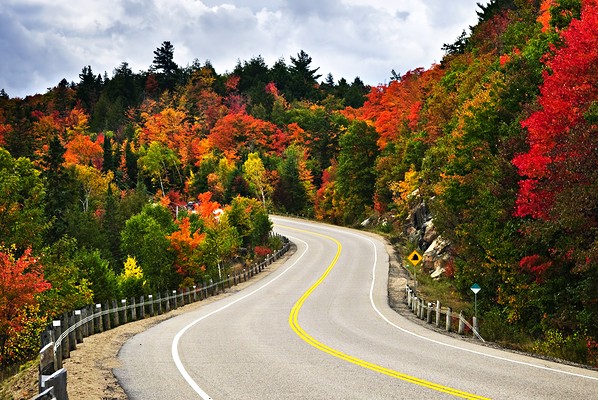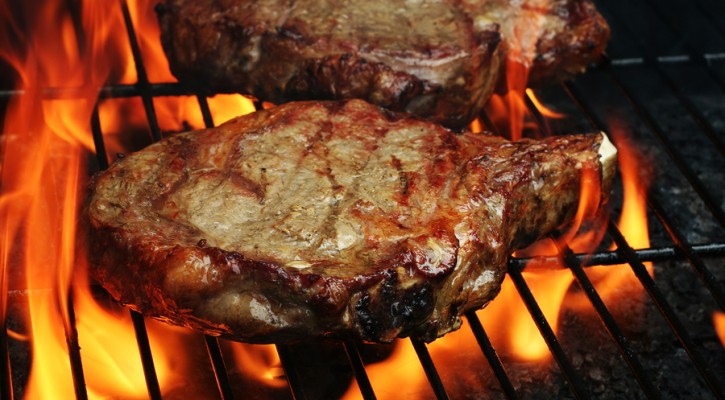
Can Hackers Control Traffic Lights?
August 1, 2014
How secure are our traffic lights? Apparently, not very. This excellent piece from Wired follows Cesar Cerrudo, an Argentinian security researcher, around Seattle, New York, and Washington, DC as he easily demonstrates how hackers can control traffic lights. See the full story here:
Hackers Can Mess With Traffic Lights to Jam Roads and Reroute Cars

Letting Trucks Drive Faster
July 31, 2014
While higher speeds are linked to an increase in automobile accidents, there are times when driving faster is actually safer. That’s why Britain is making the case for letting trucks drive faster.
The reasoning is simple enough. Current laws require trucks to drive 40 mph on 2-lane highways (a whopping 20 mph less than all the other vehicles on the road). This causes many frustrated drivers to attempt to pass trucks in the oncoming lane – a very dangerous practice.
By raising the truck speed limit to 50 mph, the government hopes to save lives by letting trucks drive faster. With tractor-trailers travelling closer to the speed of other traffic, they expect fewer drivers to attempt passing the larger vehicles in risky situations. See the full story here:

Dangers of Driving: Rural Roads Vs Interstates
July 30, 2014
The dangers of driving on a country road are much different than those of high-speed freeways and interstates. These two types of travel each offer their own hazards. Some are well-known, while others may be more surprising. That’s why it’s good to know exactly what you’re dealing with before hitting the highway.
Country Roads
You’d be forgiven if you assumed that country roads are safer than high-speed, high-traffic freeways. Actually, it’s quite the opposite. While more crashes happen in urban areas, more fatalities occur on those lonesome old country roads. Why?
- Curvy roads. Rural routes are often more narrow, with more curves and hills that block the view. All too often, drivers underestimate these curvy roads and drive too fast to maintain control.
- No passing lanes. Fast drivers can get frustrated easily out in the country. With little-to-no passing lanes, many people attempt to pass slower vehicles on the left side of the road. This can be especially dangerous in no-passing zones and areas where the view is blocked by hills or curves.
- No shoulders. Often, there is no shoulder to pull over onto when a tire goes out. This also means that there is nowhere to swerve to escape emergency situations (such as an on-coming vehicle passing a slower driver in the left lane).
- Wildlife. To top it all off, the local wildlife have been known to cause their fair share of crashes. Deer are especially infamous for causing car crashes out in the country. They will jump out in front of you at any given moment, whether they see you or not. In fact, sometimes they seem downright suicidal, waiting for a car to pass so that they can jump out at the last second.
Interstates
High speed interstate travel comes with its own fair share of troubles. While more deaths occur on country roads, far more non-fatal crashes happen on these high-traffic routes. Common reasons include:
- More traffic. The more cars on the road, the higher your chances of being involved in an accident.
- Congestion. When things get especially crowded, drivers begin to shed their safe-driving common sense. In an effort to force their way through slow-moving traffic, many people will make poor decisions, drive recklessly and even develop road rage.
- High speeds. When traveling at 70+ mph, it can be hard to react to an emergency situation before it’s too late.
- Fatigue. Driver fatigue is more common on interstates. This is because interstates and freeways have more long-distance travelers that have been on the road for hours and hours at a time. Too many people underestimate the dangers of driver fatigue. They try to keep on truckin’ no matter how long they have been driving and the result is often dangerous.
Knowing the risks of the road will help you to become a safer driver on your travels. Keep these common dangers of driving on your mind before you head out, and you’ll be ready for anything.

Tips for Rookies
July 29, 2014
You have decided to become a professional truck driver. Awesome. Now what?
Well, you’ve found a good place to start. If you are reading this then you’re obviously seeking out all the info you possibly can. You know (or will know very soon) that you’ll have to do some research, pass your CDL test, get trained and find a job. But that’s not all, folks.
Finding your way in the trucking world takes a little well-seasoned know-how. There are many aspects to this industry you will learn along the way, things that all new drivers figure out as they go. However, we can clue you in on a few common tips for rookies. Just to give you a head start in the game:
Always be skeptical of a job that sounds too good to be true.
Recruiters will promise you the world: free schooling, high pay, good insurance, easy work schedules, free trips to Disneyland… you name it. It is their job to find new drivers, often because they have failed to keep the drivers they already had. Keep this in mind when comparing employers. There is always a catch, such as reduced pay to cover the costs of training, truck rental and insurance.
Do your homework.
Trucking companies have a serious driver shortage on their hands. That means they should be the ones trying to impress you. Don’t jump on the first opportunity you see. Do the research, ask around, and check out Trucking Company Reports to find the best employers out there.
It’s OK to take your time backing up.
Even the most seasoned drivers were rookies at some point. So, everyone knows how difficult it is to master the art of backing up. Just take it slow, get out to check if needed, and back up carefully. Backing up slowly doesn’t look nearly as stupid as hitting someone else’s truck because you were too embarrassed to reverse like a new driver should: slow and steady.
While we’re on the topic of backing up, there is one trick-of-the-trade that works well. Most drop-offs happen where there has already been a lot of truck traffic. The asphalt will show signs of previous backing paths that you can follow. Just look for the path that other tires took and stay aligned with those tracks.
Always pack the essentials.
There are some things that should always be in your truck before taking off. These items will come in handy at some point:
- Pen/pencil and paper
- Flashlight
- Wrenches (9/16, 7/16, 1/2)
- Phillips head and flat head screwdriver
- CB Radio
- Trucker’s road map
- Truck stop guide
- Duct tape

HOS and Tired Truckers
July 25, 2014
Where do tired truckers come from? What causes their fatigue? Some say inadequate Hours of Service (HOS) rules. Some say overbearing HOS rules. Some blame employers, some blame the drivers themselves, while others blame bureaucracy.
In a way, they’re all right.
The issue certainly isn’t simple. Complications arise when it comes to interpreting the HOS rules. Whether or not you agree with the current law, it’s easy to see that this legislation gets really complicated really quickly when put into practice.
But don’t take it from us. Read Todd McCann’s straight-talking blog piece to get the full picture:
Why We Invest in Our Roads
July 24, 2014
Imagine…
July 23, 2014

Most Scenic Drives in America
July 22, 2014
Getting your license is like getting a ticket to the greatest show on earth: the open road. You will be free to go where you want to go and do what you want to do. You will drive. You will experience. You will live.
Along the way, you will learn that in between all the going and doing and living you will experience one of life’s most amazing moments: the scenic drive.
The good folks at Lonely Planet have put together a fantastic list of scenic drives that you can find right here in America. See the full story here:

Real Food on The Road
July 21, 2014
For the average trucker, finding a decent meal is no easy feat. Due to parking issues, most drivers must resort to gas station food and fast-food for their on-duty meals. However, the extremely helpful Suzanne Roquemore has put together a list of great eats for drivers in need of a good sit-down meal. Whether you want something healthy or are simply craving a meal that has been cooked rather than heat-lamped, this is the fine dining you’ve been looking for.
This piece published over at TruckingTruth.com features a list of top-notch restaurants with plenty of parking for tractor-trailers. See the full story here:
Parking, Driver Safety and Highway Safety
July 17, 2014
Many would argue that the availability of parking is the key to highway safety in the trucking industry. In fact, having a place for tired truckers to park would improve highway safety for everyone on the road.
That’s why last night’s discussion on Allen Smith’s Truth About Trucking Live online radio show was so important. To learn all about the issue of parking from one of the finest online driving sources, as well as hear the podcast, see the full story below:


